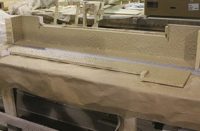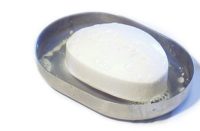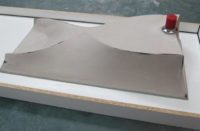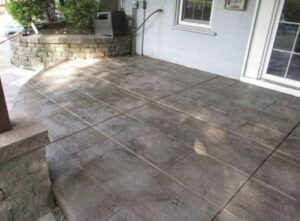Yes, it’s that time of year again. The days are growing shorter and the leaves are off the trees, being blown around — and into your concrete work — by the forthcoming winds of winter.
This is the time of year when I reminisce in my column about questions and job situations I have dealt with over the past year. As in years past, there are those that are funny, absurd and just off the wall. As always, the names have been omitted to protect the innocent.
Let’s start with an example of what I like to categorize as the “ask everyone and anyone” type of question. This is from a person who hits the Internet intent on finding a solution to his or her problem, putting it out there on any and every blog hoping someone will respond. Never mind that most of the forums the question ends up in have nothing whatsoever to do with the question being asked. This came across my desk in early 2011:
“My house has poor drainage in the yard — and limited remedies as a bike path was installed before final grading. Bad gutters too. Discovered 20 ft crack, 1/8-inch wide in my concrete foundation located between 2 support iron beams Just appeared. Is my house going to collapse? Thanks.”
I actually get a fair amount of these types of questions. It just comes with the territory when you write a column in a question-and-answer format. In all honesty, I love questions like this. They make me a more educated writer, since these types of questions have nothing to do with decorative concrete, and I often find myself having to research to find answers.
When the questions are outside my area of expertise, I encourage the author to contact an engineer or specialist in that area of concrete, and I let them know that we will be here when they have a question involving decorative concrete. I will also say that I have often wondered how a bike path ended up running through that yard.
Next up on our year-in-review journey is an example of the jobs that make you cringe, the projects that, looking back, should never have been started. The wrong material was selected, or the installer was in over their head. Placing near the top of the class of 2011 was a project involving a stampable overlay going down over an existing patio at the back of an upscale residence. The installer was a super-nice guy with years of stamped concrete experience.
But as many of you know, stamped concrete experience does not directly correlate to stamped overlay experience. In a nutshell, the product was mixed to a consistency just thicker than water, and the problems started to arise when it took about nine hours for the product to set up. As you can imagine, there were lots of shrinkage cracks, and the material was pretty soft and dusty when it finally did cure — days later.
While this job was unfortunately just one of many disasters in 2011, it deserved mention not only because of the disastrous result (25 bags of overlay had to be removed), but also because of how the end result was handled. The installer did not throw a fit or lay blame on others, but rather asked for help, realized the errors that had been made, and told the client that he would be glad to redo the project, using the same material (properly) without asking for additional money. In my book that installer not only graduated from the school of hard knocks with straight A’s, but shared a lesson in personal responsibility and standing behind your work — no matter the results — that this industry needs more of.
Without fail every year I get at least one DIYer looking to save some money and attempt a decorative project that is so far over their head and ability it boggles the mind. The winner this year goes to Jane Doe trying to improve her home in Mexico:
“Live in Mexico, limited expertise here in this, so looking at a DIY project. Going to be stamping about 3,200 square feet of exterior concrete, driveway, parking area, walkways and patios. To stamp with a mold, what products are necessary? Do I need a product that will release the polyurethane mold, or will it be sufficient to stamp on very wet cement? Does the cement mixture have to include some quicklime in order for an acid stain to ‘stick’ later on? After stamping, how much time can I wait before staining and sealing? Thanks! I’m just starting this project. Have to do it in stages for economic reasons. Overwhelmed by all the information online.”
I love the enthusiasm, but talk about chewing off more than you can handle. I have to say that each year I see DIYers pull off projects that I would have given them virtually no chance of completing, let alone making the work look good. But trying to teach someone who has no concrete experience how to stamp 3,200 square feet of concrete via an email would have been a bit over the top. I gave her some basic background information and encouraged her to find a way to hire the job out.
The Internet has opened the doors of the decorative concrete industry to a large mass of nonconcrete professionals willing to give it a try. There are so many videos, blogs and forums that are just a click away, making it seem possible that someone could learn how to stamp concrete or stain an overlay in 30 minutes or less. I often wonder if this is a good thing or just dilutes our industry. In the end I should probably practice what I preach and worry less about what the competition is doing, Internet included, and more about what I can do to improve my business. Funny though, how more of my time each year is Internet- and electronic media-focused.
I love fielding questions, helping people solve problems and sharing my knowledge with anyone willing to listen or sit still long enough to read. We are all working through some tough times in the decorative concrete industry. Keep your chin up, do good work and don’t forget to smile and laugh every once in a while. The world will be a better place for it. I look forward to talking with you in 2012.















